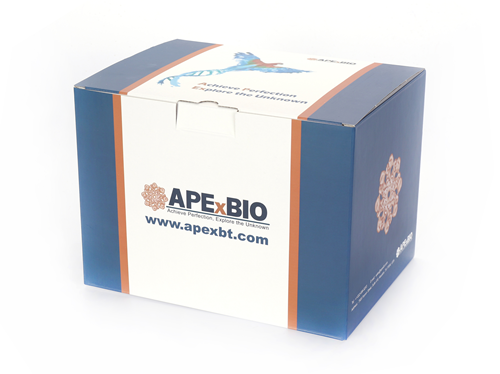Recombinant Human Angiostatin
Angiostatin, is a ~30 kDa fragment of plasminogen that is encoded by the PLG gene in humans. It is produced, for example, by autoproteolytic cleavage of plasminogen, involving extracellular disulfide bond reduction by phosphoglycerate kinase. Furthermore, angiostatin can be cleaved from plasminogen by different metalloproteinases (MMPs), elastase, prostate-specific antigen (PSA), 13 kDa serine protease, or 24 kDa endopeptidase. Angiostatin is known to bind many proteins, especially to angiomotin and endothelial cell surface ATP synthase but also integrins, annexin II, C-met receptor, NG2 proteoglycan, tissue-type plasminogen activator, chondroitin sulfate proteoglycans, and CD26. It seems to involve inhibition of endothelial cell migration, proliferation and induction of apoptosis, but its mechanism of action is still unclear. Angiostatin is currently undergoing clinical trials for its use in anticancer therapy. Recombinant angiostatin is expressed in E. coli.
Reference
1. Takahashi S, Shinya T, Sugiyama A. 2010. J Pharmacol Sci, 112: 432-7
2. Frank KFandMuller-Ehmsen J. 2009. Heart, 95: 269-70
3. Perri SR, Annabi B, Galipeau J. 2007. FASEB J, 21: 3928-36
4. Kim KS, Kim HS, Park JS, et al. 2004. Cancer Gene Ther, 11: 441-9
5. Wahl ML, Owen CS, Grant DS. 2002. Endothelium, 9: 205-16.
| Gene ID | 5340 |
| Accession # | P00747 |
| Source | Escherichia coli. |
| M.Wt | Approximately 29.7 KDa, a single non-glycosylated polypeptide chain containing 259 amino acids. |
| AA Sequence | VYLSECKTGN GKNYRGTMSK TKNGITCQKW SSTSPHRPRF SPATHPSEGL EENYCRNPDN DPQGPWCYTT DPEKRYDYCD ILECEEECMH CSGENYDGKI SKTMSGLECQ AWDSQSPHAH GYIPSKFPNK NLKKNYCRNP DRELRPWCFT TDPNKRWELC DIPRCTTPPP SSGPTYQCLK GTGENYRGNV AVTVSGHTCQ HWSAQTPHTH NRTPENFPCK N |
| Appearance | Sterile Filtered White lyophilized (freeze-dried) powder. |
| Stability & Storage | Use a manual defrost freezer and avoid repeated freeze-thaw cycles. - 12 months from date of receipt, -20 to -70 °C as supplied. - 1 month, 2 to 8 °C under sterile conditions after reconstitution. - 3 months, -20 to -70 °C under sterile conditions after reconstitution. |
| Formulation | Lyophilized from a 0.2 μm filtered concentrated solution in 20 mM NaAc, pH 5.5, 4 % mannitol. |
| Reconstitution | We recommend that this vial be briefly centrifuged prior to opening to bring the contents to the bottom. Reconstitute in sterile distilled water or aqueous buffer containing 0.1 % BSA to a concentration of 0.1-1.0 mg/mL. Stock solutions should be apportioned into working aliquots and stored at ≤ -20 °C. Further dilutions should be made in appropriate buffered solutions. |
| Biological Activity | Fully biologically active when compared to standard. The specific activity determined by an assay on anti-proliferation and anti-migration using endothelial cells in vitro and anti-angiogenesis in vivo is 5.5 × 105IU/mg. |
| Shipping Condition | Gel pack. |
| Handling | Centrifuge the vial prior to opening. |
| Usage | For Research Use Only! Not to be used in humans. |
Quality Control & DataSheet
- View current batch:
-
Purity > 95 % by SDS-PAGE and HPLC analyses.
- Datasheet
Endotoxin: Less than 1 EU/μg of rHuAngiostatin as determined by LAL method.








